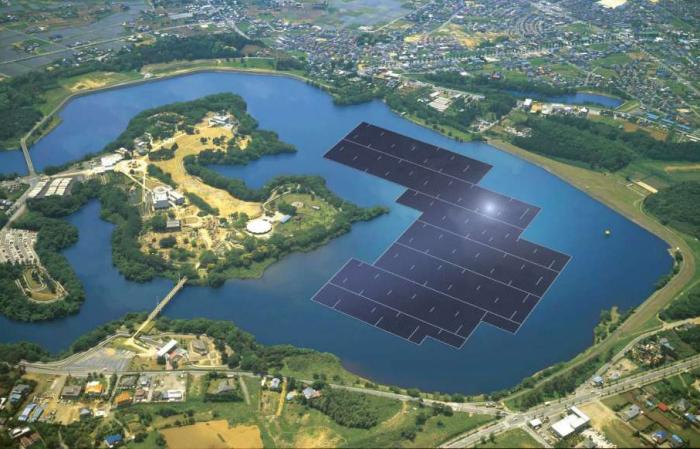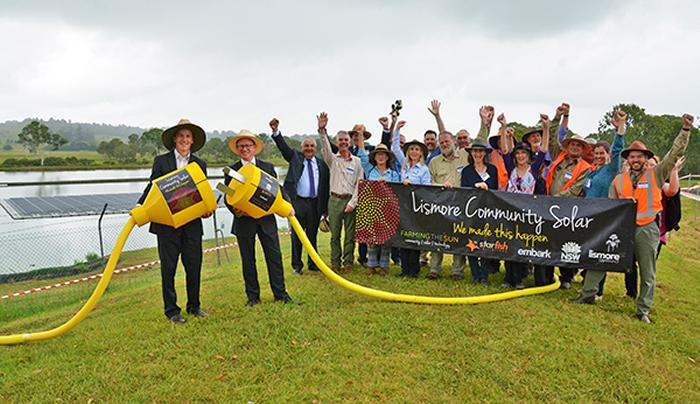
Image: Kyocera
From fish farms in China to water treatment plants here in Australia, sticking solar panels on top of bodies of water is growing in popularity.
Aqua photovoltaics offers a number of potential benefits aside from electricity generation; including reducing evaporation and growth of algae in bodies of water where panels are installed and offering an attractive platform in regions where suitable land is scarce. However, it’s still more expensive to roll out than rooftop solar power systems, so payback times can be greatly extended.
Several significant aqua-photovoltaic projects have been announced in the last week.
Kyocera’s Latest Floating Solar Projects
In Japan, where land is at a premium, Kyocera has been busy installing floating solar. The company announced yesterday Kyocera TCL Solar has begun operation of five floating solar plants across the country.
Construction of Japan’s largest floating solar power plant (13.7MW) on a dam reservoir in Chiba Prefecture (depicted above) has also been completed by the company, with operation planned to begin in March 2018.
” Through projects like this, Kyocera TCL Solar, Tokyo Century and Kyocera will remain committed to promoting renewable energy as well as contributing to environmental protection and the creation of a sustainable society,” says the company.
Added Revenue Stream For Aquaculture In China
China’s Hengtong Optic-Electric announced earlier today it had opened a 100MW solar installation on the waters of a sea cucumber farm in Dongying, Shandong province. Covering 2 km2, the installation is made up of 348,480, ” double-sided, double glass” solar panels. The solar farm is expected to generate more than 150 million kilowatt-hours of clean electricity annually.
The announcement isn’t clear as to whether the panels are affixed to floats, or fixed on pylons as has occurred elsewhere in China at fish farms.
Hengtong Optic-Electric says in addition to creating an additional revenue stream through the generation of electricity, the panels also help protect the sea cucumbers growing below them.
Cutting The Costs Of Water Treatment In Lismore, Australia
As we mentioned yesterday, a 100kW floating solar council-community project has been officially opened in the New South Wales city of Lismore, at the East Lismore Sewage Treatment Plant.

The water treatment facility is Lismore Council’s biggest electricity guzzler, consuming 1,577,726 kWh annually and accounting for 27% of Council’s total electricity consumption. Consisting of 280 solar panels, the floating solar farm should supply around 178,437 kWh annually; 12% of the site’s requirements. Council is expecting a saving of $24,000 per annum and a payback period of 11.6 years1.
Lismore Council says the solar farm can be expanded to overflow ponds at the site and that it aims to eventually power the treatment plant with 100% solar energy. One of the side benefits of the project is that it has brought international attention Lismore and the community/council collaboration model used.
Footnotes
- Small commercial rooftop solar power systems can have a payback time of as little as 5 years. ↩

 RSS - Posts
RSS - Posts



Is it just me or are those new AS/NZS 3000 wiring standards a bit heavy-handed on required cable thickness…?